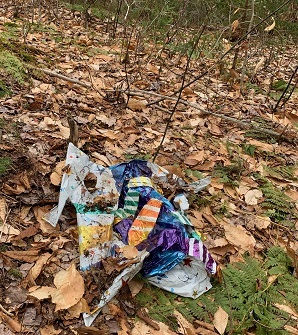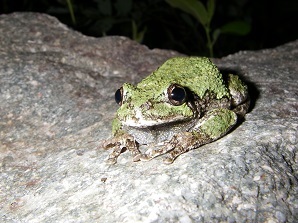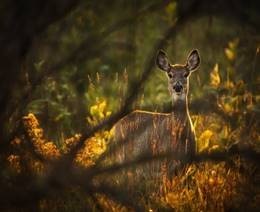Up, Up But Never Away—Balloon Litter in New York State  DEC field staff often find littered balloons, even when working in New York's most remote areas. DEC staff have been picking up balloons they find while doing field work. Fish and Wildlife Technician, Briana All says, "I'm hoping that by collecting these balloons we find in the woods and putting them on display, people will realize that when they release balloons they are littering. There is only one place these balloons will end up—back on the ground or water far from where they originated." DEC field staff often find littered balloons, even when working in New York's most remote areas. DEC staff have been picking up balloons they find while doing field work. Fish and Wildlife Technician, Briana All says, "I'm hoping that by collecting these balloons we find in the woods and putting them on display, people will realize that when they release balloons they are littering. There is only one place these balloons will end up—back on the ground or water far from where they originated."
Littered foil or latex balloons and their strings can be found on the ground, stuck in trees, in water bodies, and other sensitive ecosystems. Finding waste balloons in any wild place doesn't just take away from the experience of being in these environments—when balloons end up as litter, they can also become a hazard to fish and wildlife or can become microplastic pollution. Wildlife can and does mistake the balloons as food and tries to ingest them, blocking their intestines causing them to starve. Wildlife can also get tangled in the ribbons, which inhibits their movements or strangles them.  Be part of the solution: Be part of the solution:
- If you celebrate with balloons, make sure they are tied down tight, and avoid balloon releases. Many balloons end up in the environment after being released at celebrations and memorials.
- Dispose of balloons properly in the trash. Balloons do not belong in the recycling bin.
- Consider alternatives to balloons such as bubbles, bells, paper or fabric garlands, reusable banners, or planting a native tree, shrub, or flowers in remembrance of a loved one.
- Learn more about balloon litter and other types of plastic pollution.
Have you seen littered balloons in the environment? Send us your pictures and stories about where you have found balloons. Top photo: over 50 balloons Region 4 Wildlife staff collected in one season. Bottom photo: balloon litter Wildlife Biologist Steve Heerkins found during field work.
Wildlife Spotlight: the Gray Treefrog  The last species of Anuran (frog) to breed in New York, from late May and as late as July, is the gray treefrog (Dryophytes versicolor). The species overwinters in forests, where they spend most of their lives. They make their way to wetlands, where males call to attract mates. The last species of Anuran (frog) to breed in New York, from late May and as late as July, is the gray treefrog (Dryophytes versicolor). The species overwinters in forests, where they spend most of their lives. They make their way to wetlands, where males call to attract mates.
Females select a mate and deposits eggs on vegetation where a male fertilizes them externally. After breeding, they will return to their forested haunts, and can be heard calling periodically throughout the summer.
Patterning and coloration are variable, but they are generally covered in ragged dark blotches over a gray to light green background. Gray treefrogs have a light spot bordered by a dark edge beneath the eye and bright yellow coloration on the inside surface of their thighs. Adults are 1.5-2 inches long, and each toe is tipped by a suction cup used for climbing. Their call is an unmistakable, powerful trill that varies in length between individuals. To some, this call may be reminiscent of a raccoon, minus the random chatter. The call is so powerful, that to the human ear the pulse of their trill can be felt reverberating through the bones of the inner ear! Check out this video of a gray treefrog calling. Photo by William Hoffman.
Accessible Outdoor Recreation Open House Planned for August 8th in the Adirondacks  Join us for an open-house at John Dillon Park near Long Lake, NY on Sunday, August 8, 2021 from 11a.m. - 4 p.m. There will be pontoon boat rides, interpretive hikes, adaptive fishing clinic, camping demonstrations, and more! Join us for an open-house at John Dillon Park near Long Lake, NY on Sunday, August 8, 2021 from 11a.m. - 4 p.m. There will be pontoon boat rides, interpretive hikes, adaptive fishing clinic, camping demonstrations, and more!
Register soon on Eventbrite as space is limited. All activities are wheelchair accessible. Please let us know how we can accommodate your participation. See you out in the woods and on the water!
DEC Releases Final Deer Management Plan and Seeks Comments on Proposed Regulations  The "Management Plan for White-tailed Deer in New York State, 2021-2030" is the product of public input, expert review, and sound science that will improve the management of white-tailed deer across New York State. The plan outlines strategies to manage deer-related impacts and deer populations of different sizes. The plan enhances DEC programs that provide relief to landowners and the public experiencing deer damage and conflicts, seeks to protect New York's deer from the devastating potential of Chronic Wasting Disease, and enhances the state's deer hunting traditions. The "Management Plan for White-tailed Deer in New York State, 2021-2030" is the product of public input, expert review, and sound science that will improve the management of white-tailed deer across New York State. The plan outlines strategies to manage deer-related impacts and deer populations of different sizes. The plan enhances DEC programs that provide relief to landowners and the public experiencing deer damage and conflicts, seeks to protect New York's deer from the devastating potential of Chronic Wasting Disease, and enhances the state's deer hunting traditions.
To begin carrying out portions of the management plan, DEC proposed rule changes that will improve deer management, simplify big game hunting, expand hunting opportunity, and increase hunter safety. To view the proposed regulations and provide comment, visit the Fish and Wildlife Proposed Regulations page. DEC will accept written comments through August 8, 2021. |
 DEC field staff often find littered balloons, even when working in New York's most remote areas. DEC staff have been picking up balloons they find while doing field work. Fish and Wildlife Technician, Briana All says, "I'm hoping that by collecting these balloons we find in the woods and putting them on display, people will realize that when they release balloons they are littering. There is only one place these balloons will end up—back on the ground or water far from where they originated."
DEC field staff often find littered balloons, even when working in New York's most remote areas. DEC staff have been picking up balloons they find while doing field work. Fish and Wildlife Technician, Briana All says, "I'm hoping that by collecting these balloons we find in the woods and putting them on display, people will realize that when they release balloons they are littering. There is only one place these balloons will end up—back on the ground or water far from where they originated." Be part of the solution:
Be part of the solution: The last species of Anuran (frog) to breed in New York, from late May and as late as July, is the
The last species of Anuran (frog) to breed in New York, from late May and as late as July, is the  Join us for an open-house at
Join us for an open-house at  The "
The "
No comments:
Post a Comment